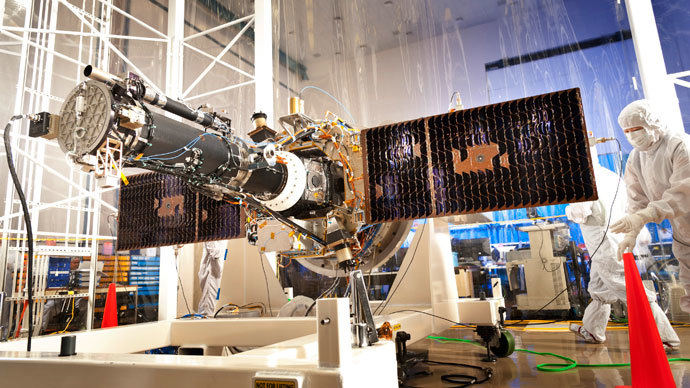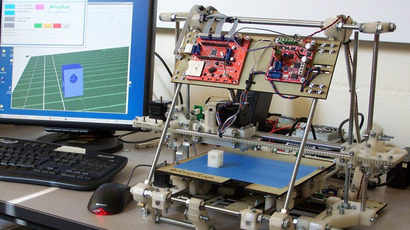All-seeing IRIS: New-gen NASA telescope poised to solve Sun mystery

NASA has launched IRIS, a revolutionary telescope that could finally explain a phenomenon that has been puzzling physicists for decades: why the Sun’s atmosphere is hotter than its surface. It may also give a clue about how other stars spread their heat.
IRIS, short for Interface Region Imaging Spectrograph – a 7-foot ultraviolet telescope that cost over $100 million – has been launched not from the ground, but from a high altitude. A specially modified plane took off from Vandenberg Air Force Base in California, before reaching a height of about 13,000 meters and dropping the Pegasus XL rocket – used on tens of missions since 1994. It propelled the payload into the atmosphere on Friday morning.

Once in the atmosphere, four identical cameras will try to rapidly capture light changes in the chromosphere – the 2,000 km deep area between the sun’s surface and outer atmosphere – which will then be processed into 3-D heat movement maps by super-computers on the ground.
At any one point they will focus in detail on just 1 per cent of the Sun’s surface – rather than the entire body, as have most existing observation telescopes.

“IRIS will show the solar chromosphere in more detail than has ever been observed before,” declared Adrian Daw, deputy project scientist. “My opinion is that we are bound to see something we didn’t expect to see.”
The prime question is – what is the physical process by which the surface of the sun is about 5,700 degrees Celsius, while the corona, the outer layer of the atmosphere, which stretches over millions of miles, is more than 1,000,000 million degrees Celsius (and can heat up to ten times that).
“Usually, the closer you get to a heat source, such as a fire, the hotter it gets, but the solar atmosphere doesn’t do that. The solar atmosphere gets hotter as it gets further away from the Sun, and scientists don’t yet have enough information to distinguish between various theories on why this happens,” said NASA in a pre-mission statement.
"What we want to discover is what the basic physical processes are that transfer energy and material from the surface of the sun out to the outer atmosphere, to the corona," said IRIS principal investigator Alan Title, a physicist at Lockheed Martin's Advanced Technology Center Solar and Astrophysics Laboratory in California.

There are two current theories explaining what has been termed the Coronal Heating Problem. One proposes that special sorts of waves travel from the hot core of the sun to the corona, where they dissipate, leaving heat. Another shows magnetic fields in the sun creating electric currents in the corona, which then violently “re-connect” lashing back onto the sun and releasing huge quantities of energy into the outer atmosphere.
“We don’t know whether any of these are right or whether we need new concepts. It’s the observations from IRIS that are going to be able to determine that,” said Eric Priest, a solar physicist at the University of Saint Andrews in Scotland.
The area under the lens is also the source of the ‘space weather’ our planetary system experiences. Solar flares and solar winds, which can have a wide variety of effects from damaging satellite equipment to causing blackouts on Earth (in fact an energy outage forced the IRIS launch to be postponed by a day), either originate in the chromosphere and the bottom of the corona, or are much affected by the little-known processes going on there.
Any discoveries will also help scientists understand how other very hot bodies in the universe behave.
“If we understand these structures properly on the Sun,”
said Priest “we will predict how they scale in other
structures in the universe.”















